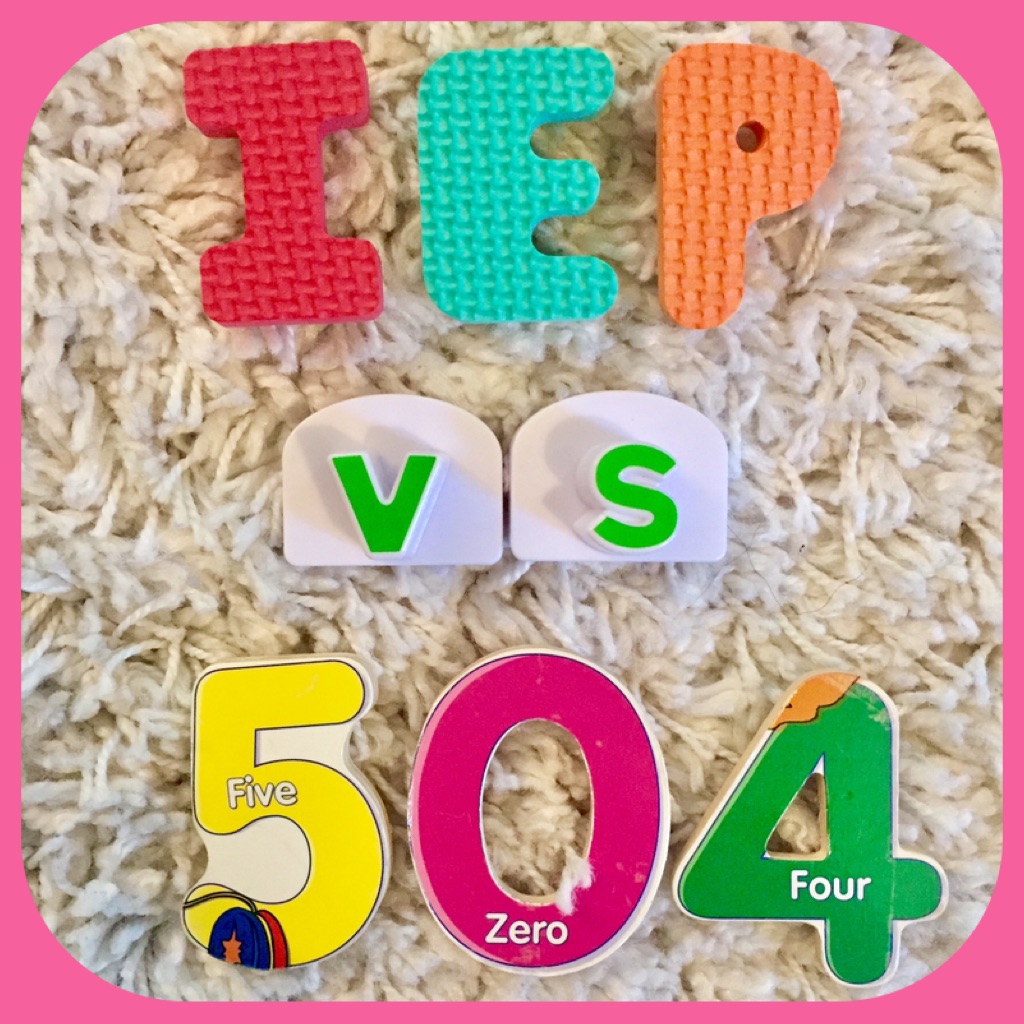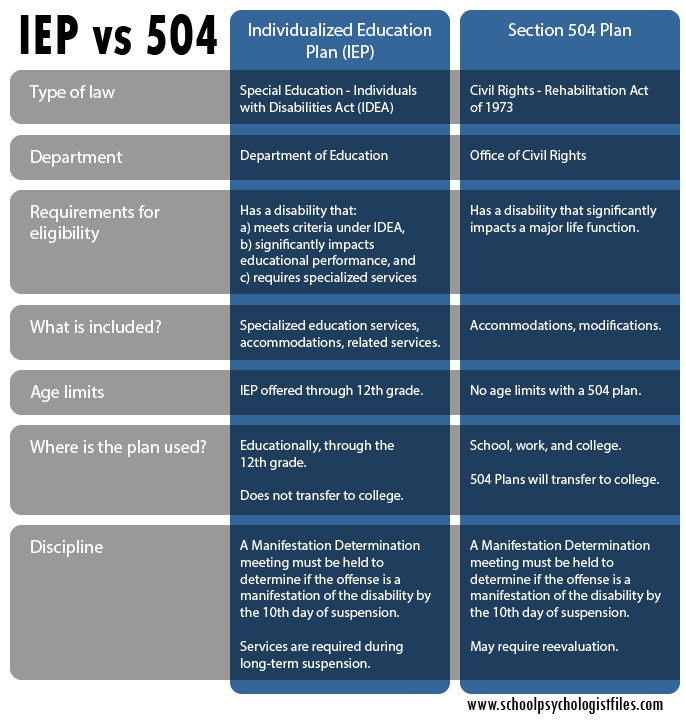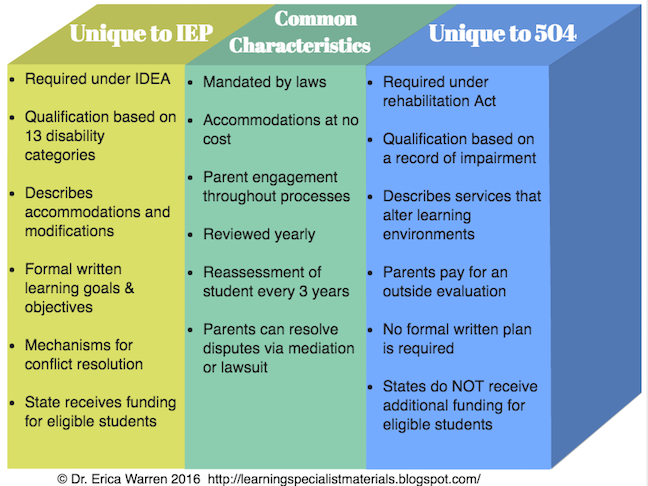
The short answer is kind’ve….because you need to understand the difference between an IEP and 504 Plan.
IEP stands for Individualized Education Program and is a legal document written by a public school system for children who are eligible for special education services due to a disability. In order to receive an IEP, kids must have a disability and it must be proven that they cannot access the general curriculum without specialized instruction. Currently, there are 13 disabilities that would qualify a child for an IEP.
For example, a child with a reading disability (Specific Learning Disability), such as dyslexia, would require specialized instruction that is different from the regular instruction in order for them to be able to access the same curriculum the other students are receiving. An IEP levels the playing field. It makes it so everyone, regardless of their mental capacity, can access the same education as the person sitting beside them.
A 504 Plan is like a blueprint for how a school system will provide support and take away any physical barriers that may impede a child from accessing the general education curriculum. 504 Plans are covered under Section 504 of the Rehabilitation Acts, a civil rights law. I like to think of 504 services as more physical than mental help…. the disability must impact a major life function such as having diabetes and needing breaks for insulin.
504 Plans do not provide individual, specialized instruction, but rather take away any physical barriers so the child can have access to the same education as others. 504 Plans can also be developed and implemented at any time without testing. For example if a child has a concussion and now requires time to lay down during the school day. This will not last forever, but for the immediacy a 504 Plan can be developed and followed in order to help the student. Another example, if a child is permanently in a wheelchair, they would receive accommodations under their 504 Plan that may require a wheelchair accessible desk, extra time in between classes, or an Adapted Physical Education (APE) gym class. Students on 504 Plans can also qualify for related services such as Speech-Language Therapy or Occupational Therapy.
There are subtle, but very important differences between an IEP and a 504 Plan. Just because a child has a disability does not automatically qualify them for an IEP. It all depends if they have one of the 13 disabilities and if they require individual specialized instruction in order to access the general education curriculum. Here is a chart briefly outlining the differences. and another chart showing what they have in common. Keep in mind this article is a brief description of special education services and qualifying for an IEP requires much more information and testing than what I have listed.


You may think SPD would fall under the “Other Health Impaired” disability category for an IEP, but you’d be wrong. As of writing this article, Sensory Processing Disorder is not listed in the Diagnostic and Statistical Manual of Mental Disorders, 5th Edition: DSM-5. I wrote an article about how SPD is not considered a Learning Disability due to it not being listed in the DSM-5. BUT, kiddos need help accessing the classroom for various reasons…so what now?!
This is where the 504 Plan comes into play. Sensory Processing Disorder would qualify a student for a 504 plan if they require accommodations in order to access the general education curriculum. Accommodations such as walk breaks during class, extra time for tests/quizzes, sound reducing headphones, wiggle chair, exercise ball for seating, and many other physical ways to help the child concentrate, focus, and feel comfortable in the classroom. Here is an article I wrote about some typical classroom accommodations for an IEP or a 504 Plan. Also, check out this link for some more SPD accommodation ideas.